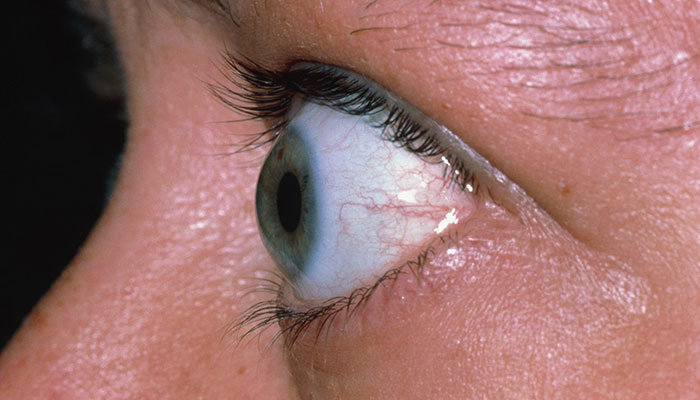Gynaecological disorders are conditions that interfere with the normal functioning of female reproductive organs, such as the breasts and the organs in the abdomen and pelvic region, including the uterus, the ovaries, the fallopian tubes, the vagina, and the vulva. The purpose of this article is to provide an insight on the various aspects of gynaecological disorders, including their symptoms, underlying causes, and treatment options.
What are Gynaecological Disorders?
Gynaecological disorders refer to a wide range of medical conditions that specifically affect the female reproductive system. Gynaecological disorders encompass a diverse set of issues, such as menstrual irregularities, polycystic ovary syndrome (PCOS), endometriosis, uterine fibroids, and various infections. Early detection and appropriate medical care are crucial in managing these disorders and preserving women’s reproductive health.
Types of Gynaecological Disorders:
- Polycystic Ovarian Syndrome (PCOS): It is a common hormonal disorder in women of reproductive age. It can cause irregular periods, excess androgen (male hormone) levels, and small cysts in the ovaries.
- Endometriosis: It is a condition in which tissue similar to the lining of the uterus (endometrium) grows outside the uterus.
- Female infertility: It is a condition in which a woman cannot conceive or carry a pregnancy even after having unprotected sex for more than a year.
- Ovarian cysts: It is a fluid-filled sac that forms on or inside the ovary.
- Fibroadenoma: It is a noncancerous (benign) breast tumour that is made up of glandular and connective tissue.
Symptoms of Gynaecological Disorders
Menstrual Irregularities: Changes in the menstrual cycle are a prominent sign of gynaecological disorders. These include heavy or prolonged bleeding, missed periods, or cycles that are too frequent.
Pelvic Pain: Persistent or recurrent pelvic pain can be linked to conditions like endometriosis, pelvic inflammatory disease (PID), or ovarian cysts.
Vaginal Discharge: Changes in the colour, consistency, or odour of vaginal discharge may suggest infections like fungal infections, bacterial vaginosis, or sexually transmitted infections (STIs).
Painful Intercourse: Pain during sexual activity may be due to various gynaecological disorders, including endometriosis, or conditions that affect the vaginal lining.
Urinary Symptoms: Gynaecological disorders like pelvic organ prolapse can lead to urinary issues, such as urinary incontinence, frequent urination, or difficulty emptying the bladder.
Unexplained Weight Changes: Sudden or unexplained weight gain or loss can be linked to hormonal imbalances, thyroid disorders, or conditions like PCOS.
Breast Changes: Gynaecological conditions, including fibrocystic breast changes, can lead to breast tenderness, lumps, or other unusual breast symptoms.
Causes of Gynaecological Disorders:
Hormonal Imbalances: Irregularities in hormone production and regulation can lead to many gynaecological disorders. For example, polycystic ovary syndrome (PCOS) results from an imbalance in androgens and insulin, affecting ovulation and menstrual cycles.
Infections: Bacterial, viral, and fungal infections can cause gynaecological issues. Sexually transmitted infections (STIs), such as chlamydia and gonorrhoea, can lead to pelvic inflammatory disease (PID), affecting the reproductive organs.
Anatomical Abnormalities: Structural anomalies in the female reproductive system can contribute to gynaecological disorders. Uterine abnormalities, like a septate or bicornuate uterus, can lead to fertility problems or miscarriages.
Autoimmune Conditions: Conditions such as systemic lupus erythematosus (SLE) can lead to fertility issues and pregnancy complications.
Tumours and Growths: Non-cancerous growths, such as uterine fibroids or ovarian cysts, can cause gynaecological problems. In some cases, these growths may interfere with fertility or cause pain.
Lifestyle Factors: Factors like poor diet, lack of exercise, smoking, and excessive alcohol consumption can impact reproductive health. Obesity, for instance, can increase the risk of PCOS and uterine fibroids.
Genetics: Some gynaecological disorders have a genetic component. Conditions like endometriosis and certain types of uterine fibroids can run in families, suggesting a genetic predisposition.
Understanding Gynaecological Disorders in Ayurveda
In Ayurveda, gynaecological disorders are often attributed to imbalances in the three doshas (Vata, Pitta, and Kapha) and the presence of toxins (ama). These imbalances can be caused by factors such as poor diet, stress, improper lifestyle, and a lack of proper self-care. Specific causes in Ayurveda include improper menstrual hygiene, unhealthy sexual practices, and dietary choices that aggravate doshic imbalances.
Treatment and Management
Treatment for gynaecological disorders varies depending on the specific condition, but here are some common treatment approaches:
Anti-Inflammatory Drugs: To relieve pain and reduce inflammation in conditions like menstrual cramps and endometriosis.
Hormonal Therapies: Hormonal treatments, such as birth control pills, hormone replacement therapy, or medications to regulate menstrual cycles, are used for various gynaecological disorders like PCOS and irregular periods.
Surgery: Surgical interventions may be necessary for conditions like endometriosis, ovarian cysts, and fibroids. Laparoscopic procedures can remove abnormal tissue or cysts, while hysterectomy is an option for severe cases.
Lifestyle Modifications: Lifestyle changes can benefit many gynaecological disorders. This includes maintaining a healthy diet, regular exercise, stress reduction techniques, and weight management. Lifestyle adjustments are crucial in managing conditions like PCOS and promoting overall well-being.
Palliative Care provided by SGP’s PSA: Palliative care for gynaecological disorders aims to provide pain relief through a combination of medications, such as painkillers and hormonal therapies. It also focuses on emotional support, counselling, and education to help individuals manage the emotional and psychological impact of the disease.
Conclusion:
Gynaecological disorders encompass a wide range of conditions that affect the female reproductive system. These issues are prevalent, with diverse impacts on women’s health, fertility, and overall well-being. While each condition is unique, early detection and tailored medical interventions can significantly improve outcomes. Additionally, lifestyle modifications and routine gynaecological examinations play a crucial role in managing and preventing certain disorders. Women need to stay informed, seek medical guidance, and maintain a healthy lifestyle to promote gynaecological health and address these conditions effectively.
FAQs about Gynaecological Disorders
-
Yes. Stress can disrupt your natural hormonal balance, resulting in irregular periods. Women can experience changes in the length, frequency, or severity of their periods leading to reproductive issues.
-
Gynaecological disorders can significantly impact a woman’s daily life. Pain, discomfort, and irregularities in menstrual cycles can disrupt work, social activities, and overall quality of life. Emotional and psychological well-being may also be affected. Seeking prompt medical advice and discussing treatment options with a healthcare provider is crucial in addressing the specific challenges and improving overall gynaecological health.
-
Gynaecological disorders can affect fertility in various ways. Conditions like PCOS, endometriosis, or blocked fallopian tubes can hinder ovulation or disrupt the normal reproductive process, making it challenging to conceive.
-
No, gynaecological disorders are not always painful. Some disorders, like ovarian cysts (small cysts), may not cause noticeable pain but can have other symptoms.
-
The prevention strategies for gynaecological disorders vary, but early detection, regular check-ups, healthy lifestyle practices, and stress management can help manage and treat some reproductive disorders effectively.





